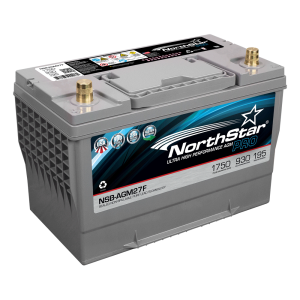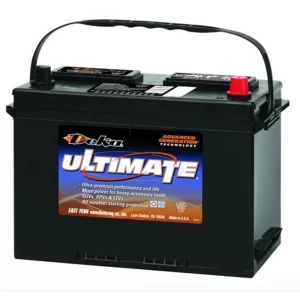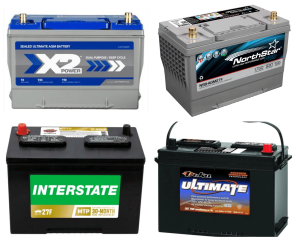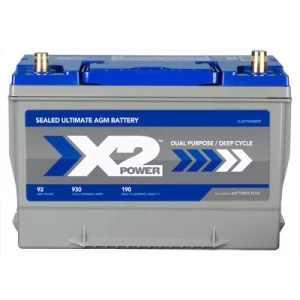Learn about AGM batteries including their advantages, disadvantages, usage in vehicles, and maintenance tips. Find out if AGM batteries are right for you.Are you considering switching to an AGM battery for your vehicle? AGM, or Absorbent Glass Mat, batteries are becoming increasingly popular for their many benefits. In this blog post, we’ll explore everything you need to know about AGM batteries, from their advantages and disadvantages to their usage in vehicles and tips for maintaining them. Whether you’re a car enthusiast or simply looking for a more reliable battery option, understanding the ins and outs of AGM batteries can help you make an informed decision. So, let’s dive in and learn more about the power-packed 27f AGM battery and how it can enhance your vehicle’s performance and reliability.

What is an AGM battery?
What is an AGM battery?
AGM (Absorbent Glass Mat) battery is a type of lead-acid battery that uses a fiberglass mat to absorb and hold the electrolyte solution. This design allows the battery to be sealed and maintenance-free, as the electrolyte will not spill or leak even if the case is punctured.
AGM batteries are commonly used in high-performance applications such as starting, lighting, and ignition (SLI) systems in vehicles, as well as in solar power storage and renewable energy systems.
AGM batteries are known for their ability to deliver high currents on demand and have a long service life. They are also resistant to vibration and have a low self-discharge rate, making them an excellent choice for a wide range of applications.
- Sealed and maintenance-free design
- High current delivery
- Long service life
- Resistance to vibration
- Low self-discharge rate
| Advantages of AGM batteries | Disadvantages of AGM batteries |
|---|---|
| Sealed and maintenance-free | Higher cost compared to traditional lead-acid batteries |
| High current delivery | Sensitive to overcharging |
| Long service life | Partial state of charge (PSOC) operation can reduce lifespan |
| Resistance to vibration | Not suitable for deep discharge applications |
| Low self-discharge rate | May require special charging equipment |
Advantages of AGM batteries
An AGM battery (Absorbent Glass Mat) is a type of sealed lead-acid battery constructed with the electrolyte suspended in a fiberglass mat separator. These batteries are becoming increasingly popular due to their numerous benefits over traditional flooded lead-acid batteries.
One of the main advantages of AGM batteries is their minimal maintenance requirements. Unlike flooded lead-acid batteries, AGM batteries do not require regular topping up with distilled water. This makes them a great choice for applications where access for maintenance is difficult, such as in vehicles or remote power systems.
Another advantage of AGM batteries is their resistance to vibration. This makes them ideal for use in vehicles and other mobile applications where they may be subjected to constant movement and jostling.

Disadvantages of AGM batteries
Disadvantages of AGM batteries
One of the main disadvantages of AGM batteries is their high cost compared to other types of batteries such as flooded lead-acid batteries. The advanced technology and construction of AGM batteries make them more expensive to produce, resulting in a higher price tag for consumers.
Another disadvantage of AGM batteries is their sensitivity to overcharging. Overcharging can lead to overheating and can cause the battery to fail prematurely. This makes it crucial for users to have the appropriate charging equipment and to closely monitor the charging process to avoid damaging the battery.
Additionally, AGM batteries have a lower tolerance for over-discharging compared to other types of batteries. If an AGM battery is over-discharged, it can lead to irreversible damage, reducing the overall lifespan of the battery. This means that users need to be mindful of the power levels and avoid completely draining the battery to prevent potential damage.
Usage of AGM batteries in vehicles
AGM (Absorbent Glass Mat) batteries are becoming increasingly popular for use in vehicles due to their numerous advantages over traditional flooded lead-acid batteries. These batteries are designed to be 100% maintenance-free, making them an ideal choice for automotive applications. The special construction of AGM batteries allows them to withstand vibrations and shocks, making them perfect for use in off-road vehicles and high-performance cars.
One of the main advantages of using AGM batteries in vehicles is their ability to provide high starting power. This means that they can deliver a burst of energy to start the engine, even in cold temperatures. In addition, AGM batteries have a low self-discharge rate, allowing them to hold their charge for longer periods of time. This makes them perfect for vehicles that are not used frequently, such as classic cars or seasonal vehicles.
Furthermore, AGM batteries are also known for their ability to handle deep cycling, which is important in vehicles that require frequent charging and discharging, such as electric vehicles and hybrid cars. Their sealed design also prevents any acid leaks, making them safe to use in any position and in close proximity to passengers. With these features, AGM batteries are the perfect choice for modern vehicles that require reliability, durability, and high performance.
Tips for maintaining AGM batteries
Tips for maintaining AGM batteries
Tips for maintaining AGM batteries
AGM (Absorbent Glass Mat) batteries are known for their high performance and long lifespan, but they require proper maintenance to ensure optimal functioning. Here are some tips for maintaining AGM batteries:
- Regular inspections: It’s important to visually inspect the battery for any signs of corrosion, leaks, or damage. Check the terminals and cables for tight connections and clean any visible dirt or debris.
- Charging: AGM batteries should be charged using a smart charger specifically designed for AGM technology. Overcharging or undercharging can significantly reduce the lifespan of the battery, so it’s crucial to follow the manufacturer’s recommendations.
- Storage: When not in use, AGM batteries should be stored in a cool, dry place with a consistent temperature. It’s also recommended to periodically charge the battery during storage to prevent sulfation and maintain its capacity.
In addition to these tips, it’s important to follow the manufacturer’s guidelines for proper maintenance and care of AGM batteries to ensure their longevity and reliable performance.
Frequently Asked Questions
What is a 27f AGM battery?
A 27f AGM battery is a type of absorbed glass mat (AGM) battery that is designed to fit the 27F battery group size, commonly used in cars, trucks, and other vehicles.
What are the advantages of a 27f AGM battery?
Some advantages of a 27f AGM battery include high vibration resistance, maintenance-free operation, and the ability to withstand deep discharges without damage.
How long does a 27f AGM battery typically last?
The lifespan of a 27f AGM battery can vary depending on usage and maintenance, but they are designed to have a longer service life compared to traditional flooded lead-acid batteries.
What vehicles can use a 27f AGM battery?
27f AGM batteries are commonly used in a wide range of vehicles including cars, trucks, SUVs, RVs, and marine vessels.
Can a 27f AGM battery be used in extreme temperatures?
Yes, AGM batteries are known for their ability to perform well in both hot and cold temperatures, making them suitable for various climates.
How should a 27f AGM battery be properly maintained?
It is important to regularly check the battery’s voltage, keep the terminals clean, and ensure proper ventilation in the battery compartment.
Are 27f AGM batteries recyclable?
Yes, AGM batteries are recyclable and it is important to dispose of them properly at designated recycling facilities.

